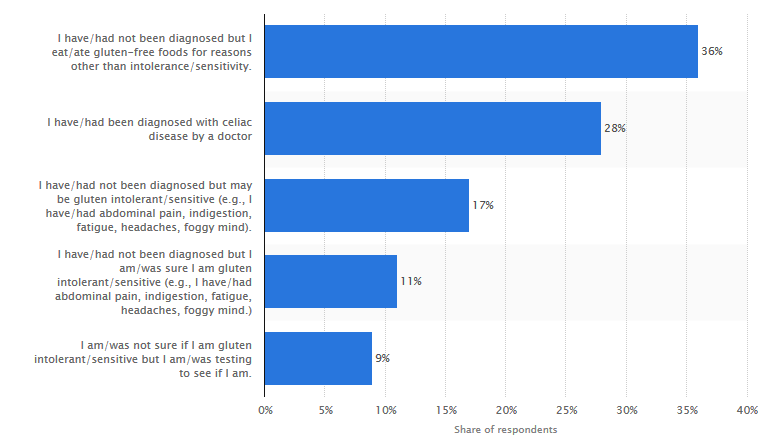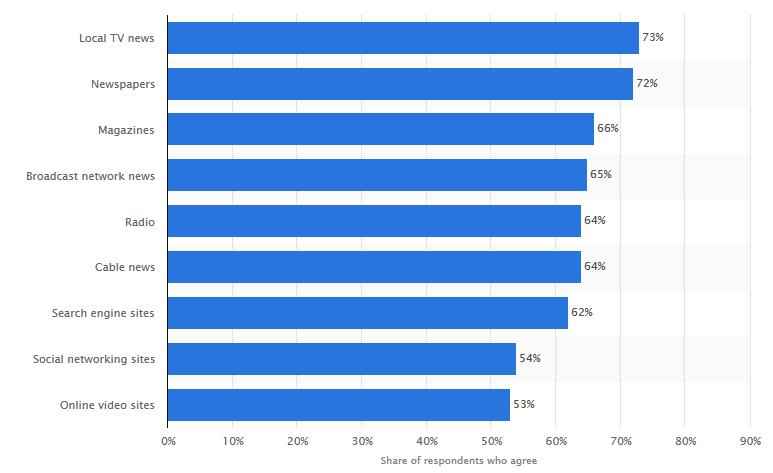Gluten-free products became actively introduced in the US food market a decade ago. The consumers’ interest in these products increases along with the increased retail sales (Case 32). Thus, producers, retailers, and marketers are interested in discussing the strategies to use the market’s potential for growth effectively. Thus, the following research question should be answered in this context: What advertising channels should be used by marketers in order to develop the growing gluten-free market with the focus on the consumers’ interests and reasons to buy gluten-free products?
The question is interesting and important to be researched because it addresses recent trends in the US food market and refers to the role of purchasing decision factors influencing the consumers’ behaviors. The gluten-free products present the comparably new category of products in the market, and this field requires additional research. There are extensive growth possibilities for the gluten-free market, but the problem is in the fact that the consumer group is rather diverse (“Gluten-Free Market Trends”). To stimulate the growth of the consumers’ group, it is necessary to use effective marketing and advertising strategies.
The data to answer the research question is downloaded from the Statista website. This statistics portal provides data from consumer surveys. The data on the consumers’ motivation regarding gluten-free products and on the popular media among the US consumers were analyzed to answer the question.
While developing the gluten-free market segment, marketers should focus on addressing the needs of the highly diverse group of consumers whose motivation regarding buying gluten-free products is not associated with celiac disease or gluten sensitivity. In order to address the wide target audience, it is necessary to advertise gluten-free products with the help of TV, radio, newspapers, magazines, and social networking websites in order to attract more consumers. Mentioning and advertising gluten-free products in newspapers, blogs, and social media websites, it is possible to address more potential consumers who are interested in new gluten-free products even without being diagnosed with celiac disease.
It is found that the US consumers of the gluten-free products present a diverse group because their motivational factors in buying gluten-free products do not depend on a certain diagnosis. There is a range of other factors influencing consumers’ purchasing behavior. According to the statistical data on the consumers’ motivation conducted in 2013, 36 percent of consumers prefer eating gluten-free products without being diagnosed with celiac disease. The other large group of consumers is persons with celiac disease (28 percent).
Those consumers who are sure that they are gluten sensitive should also be addressed in the market because they present 11 percent (Figure 1). These statistical data support the statement about the diverse consumer group interested in gluten-free products. It is also found that US consumers discuss newspapers, magazines, radio, and social networking sites as an essential part of their life. The consumer survey conducted in April 2014 states that newspapers are discussed as the important media by 72 percent; magazines are mentioned by 66 percent; radio is mentioned by 64 percent; and social networking sites are discussed by 54 percent (Figure 2). These data support the idea that ads in newspapers and magazines and on social media sites attract more consumers and provoke their interest related to gluten-free products.
Statistical Data


Works Cited
Case, Shelly. The Gluten-Free Boom. 2010. Web.
Gluten-Free Market Trends. 2012. Web.